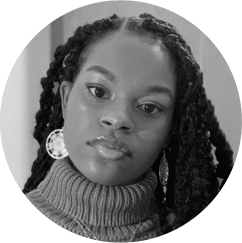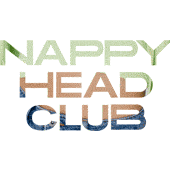Community-building programs are the backbone of many Black communities across the country. With the world often turning a blind eye to our struggles and disadvantages, we’ve had no choice but to make a way for ourselves and one another in order to survive. Whether it be programs for college preparation, family development, or youth development, we have worked tirelessly to ensure each other’s success in a world that is often too quick to take it away. Within the Black community, we live by the parable “it takes a village to raise a child” and take it seriously.
Growing up, I experienced what community-building and development looked like firsthand. I witnessed many individuals work in their respected fields, hoping to make some form of impact on the lives of Black youth for the better. Some people, like my father, choose to work in the public school system, where they felt like Black children were being deprived of their history and knowledge of their culture. Others chose to lead what we would call “youth groups” or “youth programs,” where they would impart wisdom and mentorship among kids and try to encourage them to be the best they could possibly be.
Being the daughter of an activist, my father would often take me to various events where he met up with people who wanted to make change in the Black community. These people not only wanted an end to horrific things like police brutality and gang violence, but they also wanted the environment to be better for their children. They wanted better schools, less liquor stores, more recreational centers, and almost anything a loving parent would want for their children. Overall, they wanted them on the right track and to be success stories rather than statistics. While I found this work quite notable, I noticed something very off about their approach, even at a young age.
Throughout the years, I attended a series of dinners, marches, conferences, and regular meetings. And, after a while I began to notice a pattern in how these events operated and the kind of discourse that organizers and so-called activists would often partake in — though they understood that racism and discrimination played a significant role in the issues faced by Black youth, they found the culture that surrounded them just as much to blame. In the eyes of many older Black folks, young people were very much responsible for their own oppression and mistreatment — it was the rap music, the sagging of pants, the ebonics, the disregard for authoritative figures, and just about the same reasoning that was often attributed to white, conservative thought.
One program that had a particular impact on me was a college preparatory program for young people back when I was in high school. My father had insisted that I went to the program every Wednesday evening, despite my hesitance to go — I was never enthusiastic about spending two and a half hours with other people after being in school for six hours earlier. Still, I figured that it would be worth my time because it would be focused on college, a place that I very much intended to go. But on the contrary, I was completely disillusioned by what I experienced once I actually got into the program and became a regular attendee. While the program very much emphasized the importance of education, good studying habits, and a high SAT score, the adults who ran the program also had absolutely no problem pointing out the things that they saw as our faults or shortcomings. According to them, most of our issues stemmed from a lack of motivation, discipline, and self-respect. Other factors like poverty, the school-to-prison pipeline, and discrimination rarely made it into the conversation. When it did, it was kept to a minimum. We remained as the focus.
It’s because of this way of thinking that many individuals who lead youth programs push a heavy amount of respectability politics as a part of their curriculum. Instead of explaining to Black youth why the system and the institutions in place are not in their favor, those in charge use those same oppressive systems as benchmarks for what success really looks like. Success often looks like white kids in the suburbs, though we have blatantly ignored the fact that they are often guilty of the same type of behavior, the only difference being that their wealth and resources are the main factors that set them apart from Black children. The idea of “don’t be a statistic, beat the odds” is constantly being held over the heads of our children — if someone gets arrested, they are a failure. If someone gets pregnant, they are a failure. If someone doesn’t go to college and become financially well-off, they are once again, considered a failure. Rather than teach on how flawed things actually were, many prefer to feed into the idea of Black exceptionalism, believing that as long as kids are well-behaved and pay attention in school, it is almost guaranteed that a child can become the next Barack or Michelle Obama.
This kind of thinking, while it may seem like tough love and strict guidance for our children, is actually very toxic and dangerous. By ignoring the bigger picture and assuming that our children will have the same experiences and opportunities as other demographics, we’re allowing them to believe that they themselves are a problem and need “fixing” in the case that they don’t beat the odds of a racist and capitalist-driven society. And, when they turn to behavior that we deem “unconventional” or “disgraceful,” we blame them and the environments that they come from, rather than the circumstances that create these environments in the first place. Ultimately, this brings about the false idea that our youth themselves are naturally predisposed to trouble or troublemaking, and are inherently criminal.
In order to truly help and empower Black youth, we need to look into alternatives to “tough love” and instead create loving and encouraging environments that aren’t based around the premise that they are in and of themselves a “problem.” The world already has it in for them, so they shouldn’t have to come back home after a long day and receive the same treatment from us. Any program that seeks to build community must do so through positive reinforcement and well-intentioned engagement through critical discussions and resolution — if young people are our future leaders and the people who will one day take over, how can we ensure their progress when all we do is vilify them? Rather than fighting our own, we should be looking to fight systems and institutions that put those who we care about at a disadvantage. It’s about time that we keep that same energy and redirect our anger at white supremacist institutions and let them know that we will no longer allow them to mess with our children. They are far too valuable.

About the Author:
Maryam Azeeza Muhammad is a poet, womanist, and journalism student from Bridgeport, CT currently attending Temple University in Philadelphia, PA.




JOIN THE DISCUSSION (0 comments)